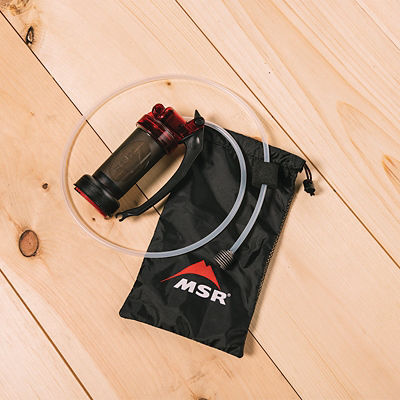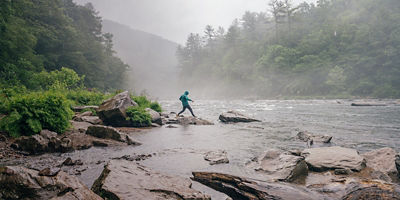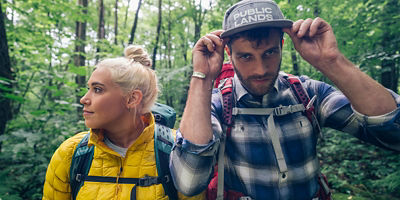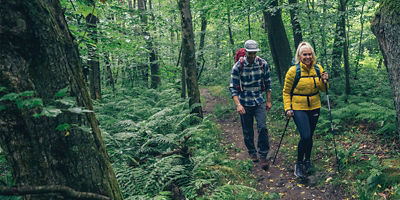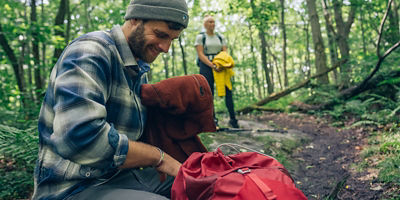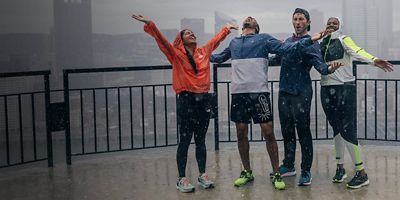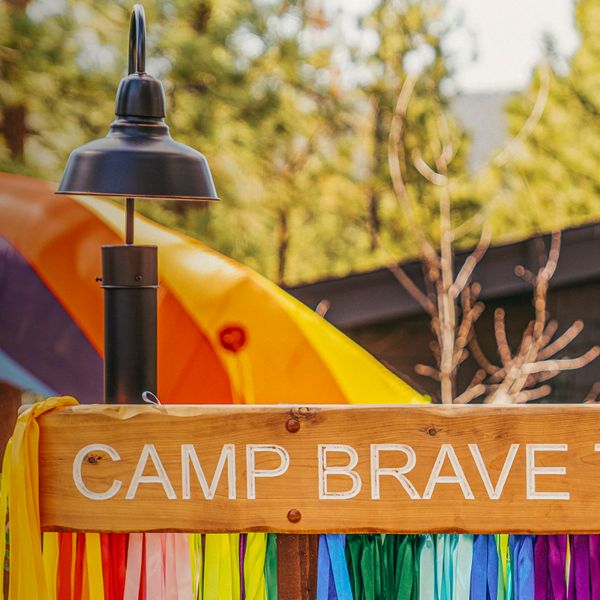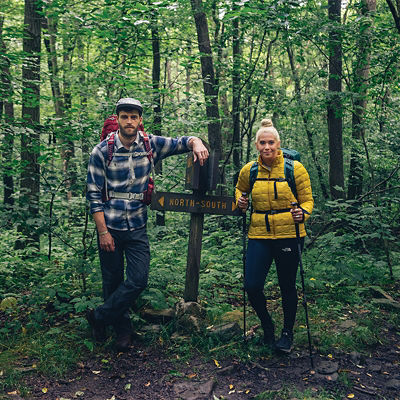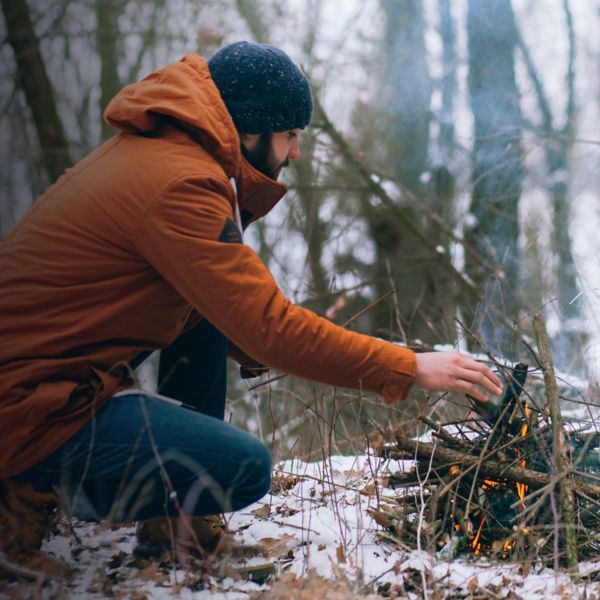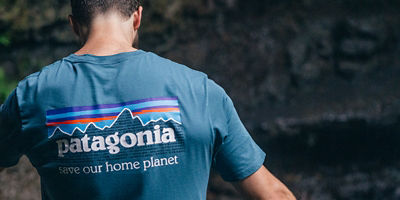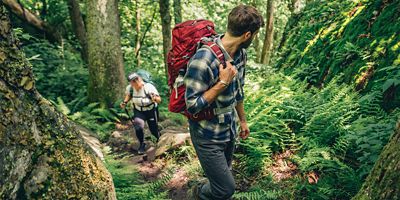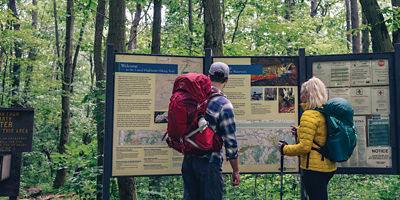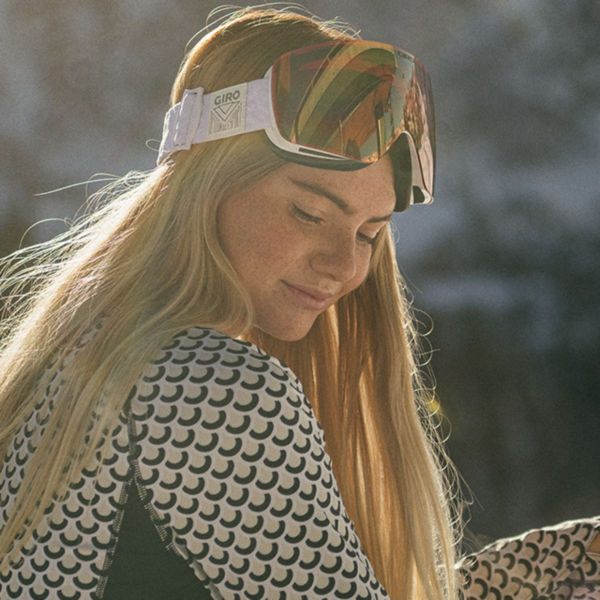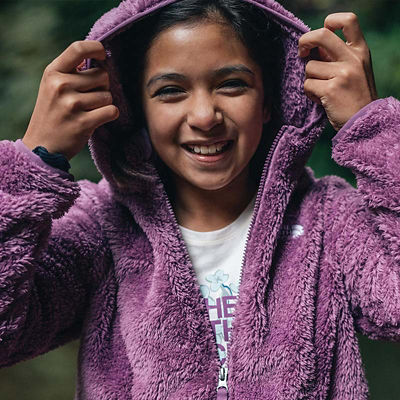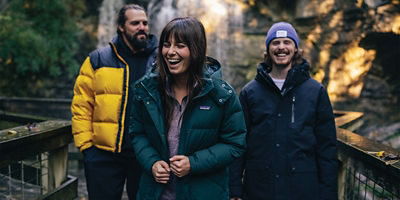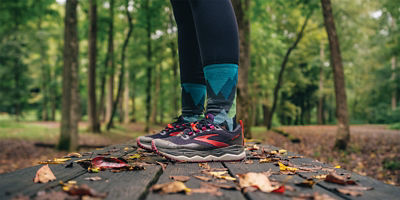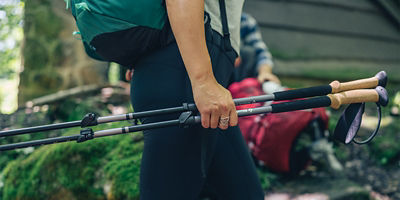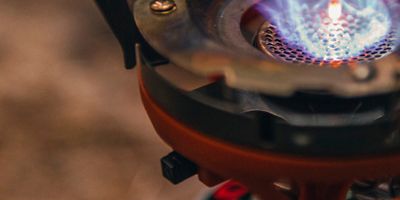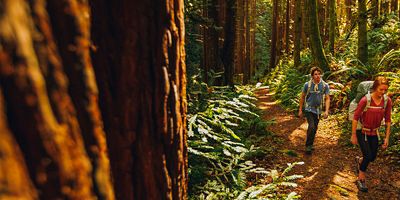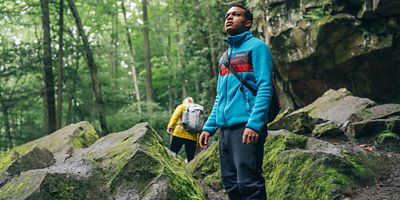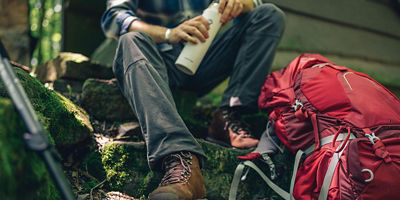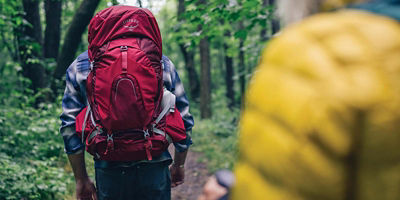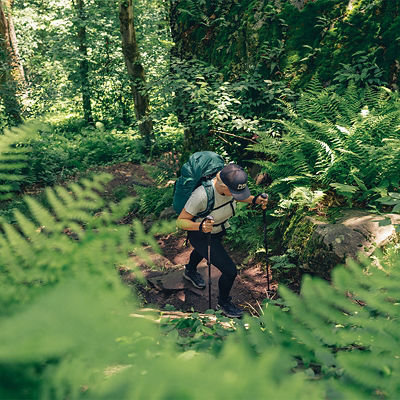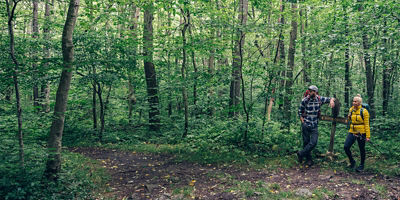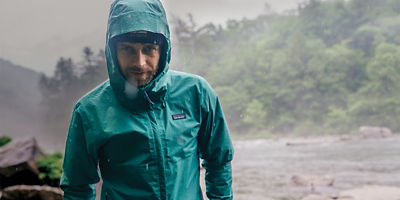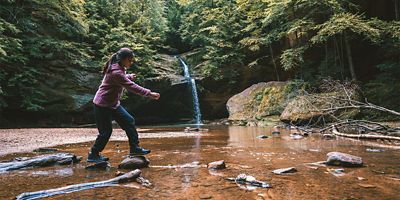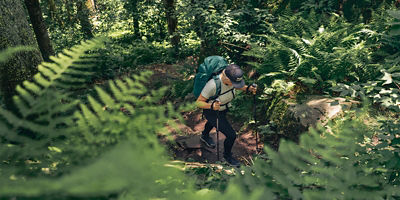Choose Your Gear Wisely
What you wear on a hot day can make a big difference in your comfort. You can reduce layers and go with as little clothes as possible—making sure those minimal items are breathable, sweat-wicking, and quick-drying. Or, you can go with the opposite strategy, opting to cover your skin with looser, lightweight materials. Both approaches work. The latter (covering your skin) can keep you cooler with less concern about prolonged UV exposure, especially if you douse your lightweight long-sleeve shirt with water.
Cotton versus synthetics
Technical fabrics dry quickly, but can do a good job keeping you cool when wet…though not as good as cotton. Cotton shirts, like simple button-ups or even lightweight T-shirts, stay wet for longer than synthetics and therefore, can help keep you cool for longer. The downside of hiking in a cotton shirt is that wet cotton can feel heavy—and cause chafing. However, wearing a wet, cotton bandana around your neck gives you the benefits of cooling without the threat of wet, cotton seams or wrinkles chafing under your arms, along your sides, or under pack straps.
Short-sleeve or tank-style tops: You’ll want to wear the lightest-weight, most-breathable, sweat-wicking, quick-drying tank or short-sleeve tee you can find. Tops made out of synthetic fibers fabricated into mesh-like, or wispy fabric will feel best in heat. Bonus points for if the top has an SPF rating—the ability to block harmful rays.
Long-sleeve tops: This may seem counterintuitive, but long-sleeve shirts can keep you cooler than short-sleeves or tanks because they shield your skin from the sun. Choose a light color that reflects the sun as opposed to a dark color that attracts the sun’s rays. And make sure the top is lightweight, breathable, and quick-drying. Some long-sleeve shirts made for hiking or other activities in hot weather feature ventilation panels in the back. And some also feature sun-shielding Ultraviolet Protection Factor (UPF) ratings to gauge their protection level—similar to sunscreen’s Sun Protection Factor (SPF) rating system against ultraviolet B (UVB) rays, only for apparel, and designed to filter both ultraviolet A (UVA) and B (UVB) light. Loose-fitting shirts will feel cooler than snug-fitting shirts as they allow air circulation between the shirt and your skin.
Bottoms: Long pants can work similarly to long-sleeve shirts, but make sure they’re extremely lightweight, breathable, and loose-fitting. Otherwise, shorts made of lightweight, breathable, quick-drying material will feel cooler than canvas hiking shorts.
Socks: Again, opt for lightweight, breathable, sweat-wicking and quick-drying fabric. Lightweight wool or wool-blend socks do well in the heat. Whatever material you choose, make sure the socks fit your feet well. Blisters are a result of heat, moisture, and friction, and summer hiking already serves up hefty doses of heat and moisture (sweat, or humidity). Avoid friction by wearing well-fitting socks.
Hats: Sun-shielding hats are imperative in heat for their ability to block UV rays from scorching your face. Opt for wide-brimmed hats made of lightweight material. The wider the brim, the more shade you’ll be creating for yourself. Pro tip: Any time you cross a stream or are near a body of water, dunk your hat and put it back on.
Sunblock: Though it won’t necessarily keep you cool, having a sunburn can keep you from wanting to head out the next time you have a hike planned. Shop for sunscreens specifically formulated to stay on while you sweat.
Drink Lots of Liquids
Staying hydrated is important in the heat; it’s critical on a hike when you’re sweating constantly. Drinking liquids can also cool your body temperature—and they don’t have to be ice cold. Yes, colder water or electrolyte drinks will be refreshing to your body’s systems that it contacts, but other systems have to work hard to warm the water. Consider starting a hike with cold liquid, however. In heat it will become cool to “room” (outdoor room) temperature. No one wants to drink warm liquids on a hot hike!
Due to the increased amount of sweating that happens during summer hikes, replacing your electrolytes with sports drinks or mixes, or salt tablets, is a good idea. To stay safe, stick to the rule of thumb of carrying approximately a half-liter to consume every hour spent hiking. Options for how you carry that added liquid weight on a hike range from backpack-style to handhelds.
Hydration pack
Over-the-shoulder, backpack-style hydration packs with bladders that contain your liquid of choice and a hydration hose are the most common hydration systems for hikers. They allow you to keep your hands free for holding trekking poles, scrambling over rocks, or taking pictures. Shop for packs with breathable back panels made of sweat-wicking mesh. Some packs are constructed with ventilation panels on the backside.
Waist pack
Carrying water around your waist also leaves your hands free. It can be difficult to carry large amounts of water around your waist, but waist packs can work well for shorter hikes requiring a moderate amount of water. Shop for waist packs with mesh or ventilating panels that lie against your body for maximum comfort.
Handheld
Carrying water in your hand with a system that holds a bottle or a soft flask can work for minimal amounts of liquid. These systems are usually made out of breathable, sweat-wicking material. If you go with a handheld, be sure to switch hands once in a while to not create muscle imbalances and potential pains.
Filter
Purchasing a filtration system can save you from carrying extensive amounts of water. Just make sure you know that you’ll be coming into contact with a freshwater body or source to filter (like a stream or lake) and that you know how to use the system you’re carrying.
